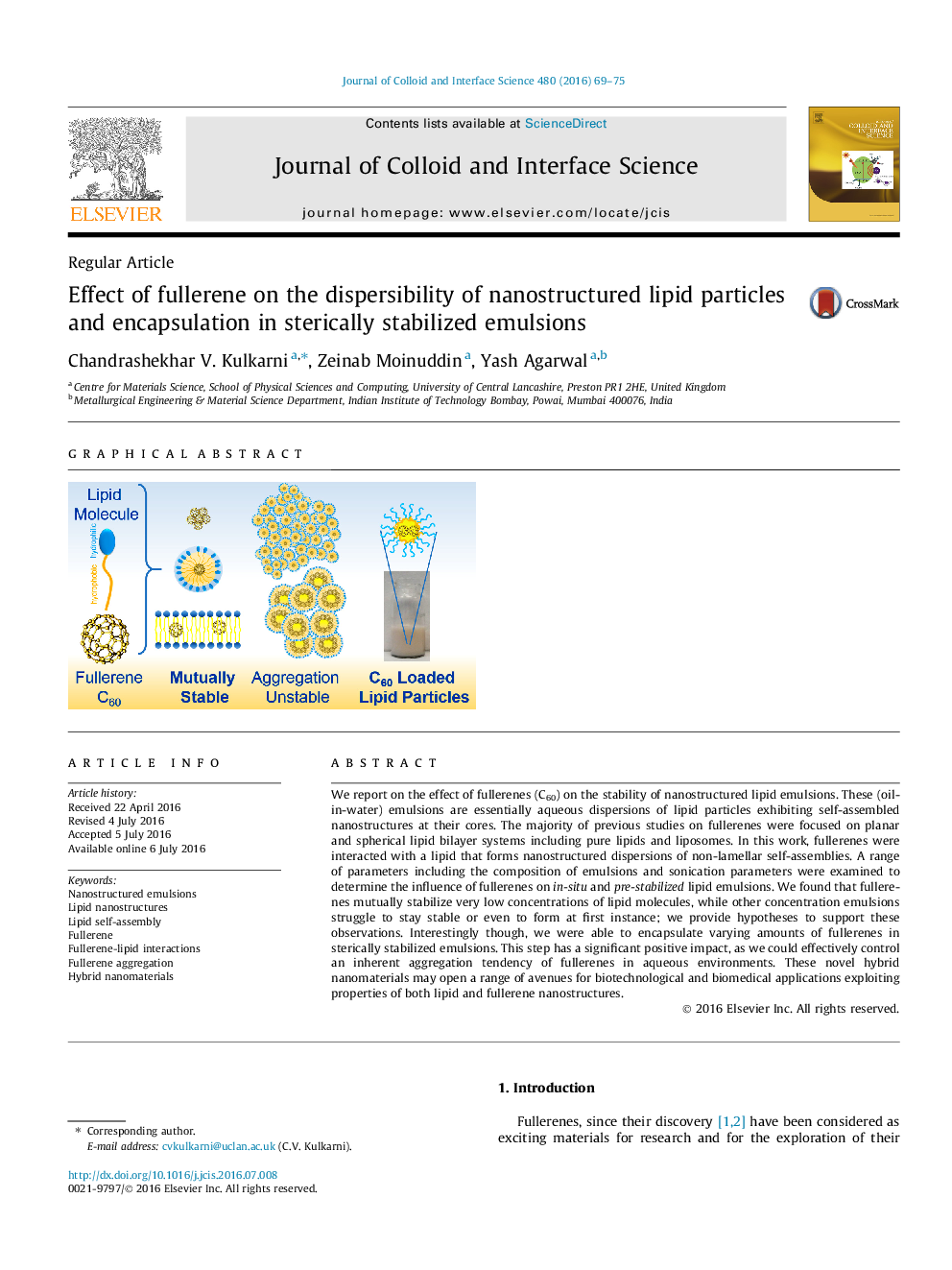| Article ID | Journal | Published Year | Pages | File Type |
|---|---|---|---|---|
| 606155 | Journal of Colloid and Interface Science | 2016 | 7 Pages |
We report on the effect of fullerenes (C60) on the stability of nanostructured lipid emulsions. These (oil-in-water) emulsions are essentially aqueous dispersions of lipid particles exhibiting self-assembled nanostructures at their cores. The majority of previous studies on fullerenes were focused on planar and spherical lipid bilayer systems including pure lipids and liposomes. In this work, fullerenes were interacted with a lipid that forms nanostructured dispersions of non-lamellar self-assemblies. A range of parameters including the composition of emulsions and sonication parameters were examined to determine the influence of fullerenes on in-situ and pre-stabilized lipid emulsions. We found that fullerenes mutually stabilize very low concentrations of lipid molecules, while other concentration emulsions struggle to stay stable or even to form at first instance; we provide hypotheses to support these observations. Interestingly though, we were able to encapsulate varying amounts of fullerenes in sterically stabilized emulsions. This step has a significant positive impact, as we could effectively control an inherent aggregation tendency of fullerenes in aqueous environments. These novel hybrid nanomaterials may open a range of avenues for biotechnological and biomedical applications exploiting properties of both lipid and fullerene nanostructures.
Graphical abstractFigure optionsDownload full-size imageDownload high-quality image (256 K)Download as PowerPoint slide
